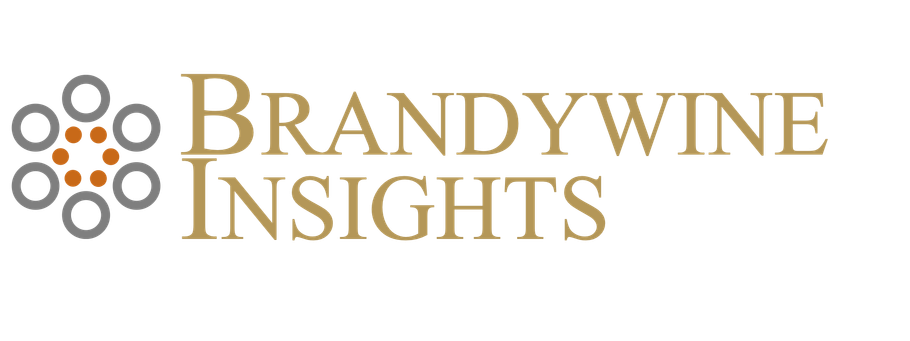
"Your scientists were so preoccupied with whether or not they could, they didn’t stop to think if they should."
— Dr. Ian Malcolm (Jeff Goldblum), Jurassic Park
Suby Joseph
The Algorithmic Boardroom: Integrating AI for Enhanced Governance (Without Losing the Human Touch)
The modern corporate boardroom is awash in data. Many directors feel they are navigating a data tsunami with a flip chart (and a very brave face). From sprawling operational reports and real-time market fluctuations to regulatory filings that could double as a sleep aid, the volume is overwhelming. Enter the age of the algorithmic boardroom, where artificial intelligence is stepping out of the server room and into the strategist's corner.
This isn't about replacing seasoned directors with silicon counterparts (at least, not until AI can master the art of the diplomatically skeptical follow-up question). Instead, it's about augmenting their wisdom with the unparalleled analytical power of AI. It’s about creating a synergy where human experience is amplified by machine intelligence—leading to better decisions and, ideally, shorter meetings.
"For years, boards have been asking for a crystal ball. AI isn't it. But it is a ridiculously well-informed, data-driven consigliere who's seen a million possible futures and never gets jet-lagged."
Putting AI into Practice: From Summaries to Strategy
The most immediate application of AI is in taming the paper beast. Foundational tools from companies like Diligent and Boardable excel at streamlining board work. Imagine a director, Susan, preparing for a meeting:
The Ultimate Assistant: She logs in to find a draft board book already assembled by an AI. It's like having a chief of staff who doesn't need vacation days and thinks 'synergy' is a data point.
The Dream Summary: Faced with a 200-page acquisition report, she clicks a button. The AI generates the concise, insightful executive summary she's always dreamed of but was too afraid to ask for.
The End of "Who Took That?": After the meeting, the AI assistant drafts minutes and assigns action items, ending the age-old debate of "Wait, who took that action item?" and the subsequent meeting-wide game of hot potato.
Beyond Text: Unique AI Applications in the Boardroom
While efficiency is great, the truly transformative tools go beyond text. They uncover patterns and provide perspectives that are impossible for humans to see on their own.
ESG Benchmarking (Without the Pain): Manually benchmarking your company's ESG efforts is an arduous task that usually involves a doomed intern and a thousand spreadsheets. Tools like Nasdaq Sustainable Lens use AI to do the heavy lifting, showing the board exactly how their policies stack up against peers.
AI Watching the AI: As your company deploys more AI, the board must oversee it. Platforms like Relyance AI provide a "control panel," using AI to monitor the company's other AI systems for bias and compliance risks. It's either very reassuring or the beginning of a sci-fi movie with a complex D&O insurance claim.
Gauging Boardroom Dynamics: The most cutting-edge tools are even turning the lens on the board itself. Anonymized analysis of meeting transcripts can reveal if a discussion was a robust debate or just "The CEO and CFO Show, featuring a silent chorus of nodding heads."
A Closer Look: AI Tools for the Boardroom
For directors considering these solutions, it's important to understand the specifics. The following table provides a snapshot of some of the tools mentioned.
Tool
Diligent One Platform
diligent.com
How It Works
Integrates generative AI to summarize lengthy board materials, highlight key risks and opportunities within documents, and benchmark governance practices against a vast dataset of market intelligence.
Pricing Model
By Quote. Enterprise software pricing is tailored to the organization's size, needs, and specific modules chosen.
Required Literacy
Low. Designed for busy executives. If you can use standard office software and a smartphone, you can use Diligent's AI features.
Boardable
boardable.com
Focuses on meeting efficiency. Its AI Meeting Assistant generates summaries, transcripts, and action items from meeting recordings, automating post-meeting administrative tasks for board secretaries and chairs.
Tiered Subscription. Publicly lists plans (e.g., Essentials, Professional, Enterprise) with per-user monthly fees. Prices range from ~$79 to ~$159/user/month
Low. Highly user-friendly interface focused on simplifying meeting management. Very little training is required.
Nasdaq Sustainable Lens
nasdaq.com/solutions/nasdaq-sustainable-lens
Uses AI and machine learning to scour and structure unstructured data from thousands of public reports, filings, and news sources. It provides boards with ESG performance data, peer benchmarking, and regulatory risk analysis.
By Quote. This is a specialized, data-intensive enterprise tool. Pricing is based on the scope of analysis required.
Moderate. While the dashboard is user-friendly, interpreting ESG benchmark data and its strategic implications requires a solid understanding of sustainability metrics.
Relyance AI
relyance.ai
This is a "governance of AI" tool. It uses AI to automatically scan a company's internal systems, creating a live map of how data and AI models are used. It flags privacy risks and potential non-compliance with AI regulations for the board.
By Quote. Pricing is based on the complexity of the company's internal data and AI infrastructure that needs to be monitored.
Moderate. Board members can easily view the dashboard and risk reports. Understanding the underlying data flow maps may require collaboration with the CIO or CTO.
Velotix
velotix.ai
An AI-driven data security and access governance platform. It provides policies and controls over who can access sensitive data for use in AI models, providing an audit trail for the board and ensuring data usage aligns with company policy.
By Quote. Enterprise solution priced based on the number of data sources, users, and complexity of policies being managed.
Moderate. The platform is designed for data teams, but the policy and reporting dashboards are built for executive and board-level oversight.
DataVisor
datavisor.com
Employs unsupervised machine learning to detect fraud and financial crime. Instead of looking for known fraud patterns, it learns a company's "normal" transactional behavior and flags anomalous activity in real time.
By Quote. Pricing is based on transaction volume and the complexity of the detection models required for the specific business.
Moderate. The board's audit committee can easily understand the high-level risk reports, but deep dives into specific flagged events would involve the risk management team.
The Human Element: Why Wisdom Trumps the Algorithm
The rise of AI in governance doesn't signal the obsolescence of human intuition. In fact, it makes it more critical than ever.
"An AI can process a million data points to tell you the 'what'. But a great director uses their experience, intuition, and gut to understand the 'so what?'. The day an AI can read the room during a tense negotiation is the day we're all in trouble."
An AI can tell you a market is projected to grow, but it can't tell you if that growth aligns with the company's core values. It lacks a human's ethical compass, a feel for corporate culture, and the ability to know when a deal just doesn't pass the sniff test.
Actionable Insights for the AI-Powered Board
Integrating AI into the boardroom is a journey, not a flip of a switch.
- Start Small, Think Big: Begin with a pilot project, like automating board book summaries, before moving to more complex applications.
- Foster AI Literacy: Board members don't need to become data scientists, but they do need a foundational understanding so they can ask intelligent questions, not just nod along and hope the algorithm didn't get its MBA from a video game.
- Demand Transparency: "Black box" algorithms are not suitable for high-stakes governance decisions. If a vendor can't explain its reasoning, send it back to the lab.
- Govern the AI: Just as the board oversees corporate governance, it must also oversee the governance of the AI itself to prevent bias and ensure ethical use.
The algorithmic boardroom is no longer a futuristic fantasy. By thoughtfully integrating the power of AI while preserving the irreplaceable value of human judgment, boards can navigate the modern business world with greater confidence. The key is to remember that AI is a powerful tool, but wisdom, ethics, and the human touch will always have a seat at the table.
